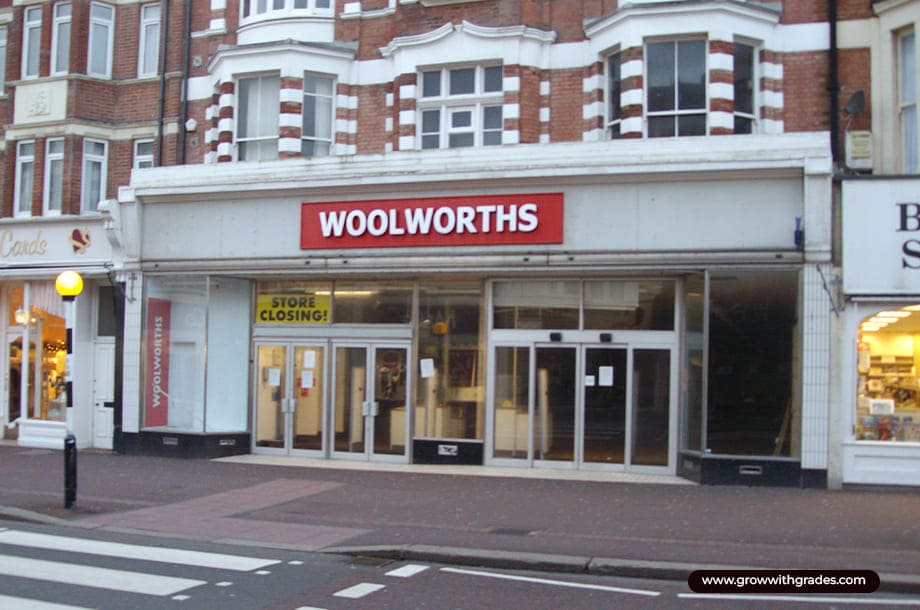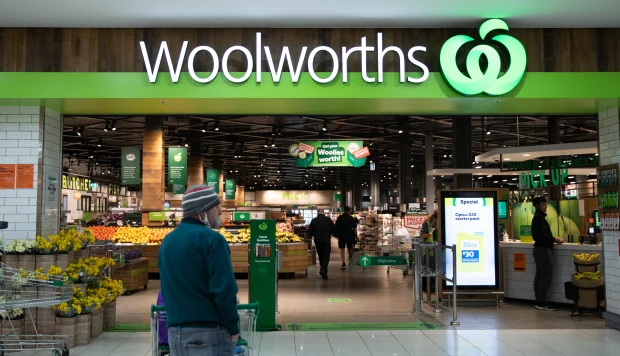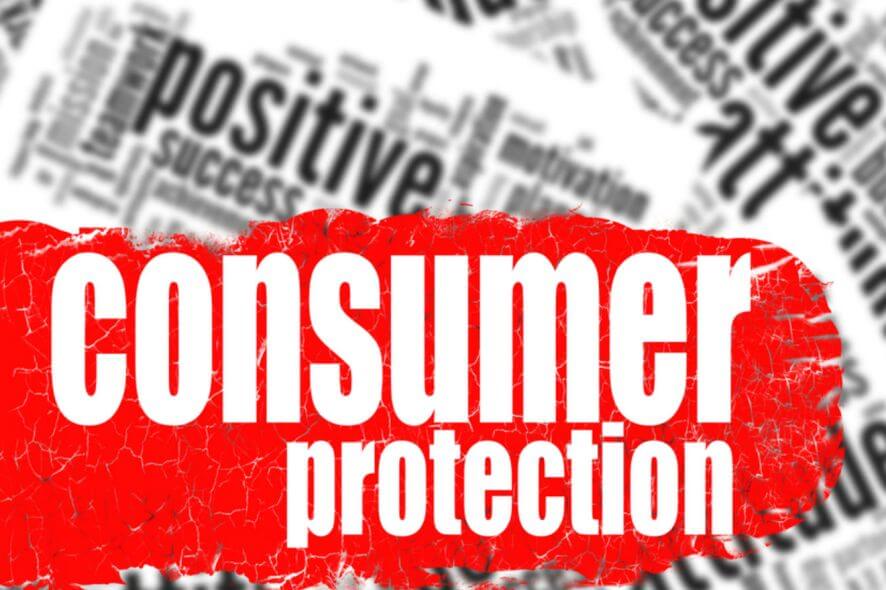
Introduction
Bringing innovation and ease altogether is a tough task in a modern world that has a lot to offer on the platter. However, with digitalisation and globalisation driving the world, it has become a rather easy task to offer innovation and ease using time management and affordable techniques. Using the best of what the times have offered, many businesses and companies built big brand names likewise Woolworths. Woolworths was merely a small-scale brand that sold limited items and today they own numerous brands that serve Australians and consumers all over the globe. Woolworths is one of the biggest Australian retail groups that offer products like groceries, fresh fruits & vegetables along with other packed items.
Let's learn about Woolworth Supply Chain and how Woolworth is assisting Australians all across the country through groceries, fruits & vegetables and other everyday household items such as meats and fresh produce. As far as popularity is concerned, Woolworths has become a globally trusted brand as people have started buying their products online.
But why is Woolworths so popular? The reason is that it lays down benefits and services that quite less amount of retail companies offer. It offers great prices, and qualitative products, and delivers them affordably to your doorsteps without any high-end costs. Buyers from any part of the world can shop for their favourite Australian brands as well as support local farms by ordering their produce from Woolworths stores.
What is Woolworth?
Woolworths Supermarket is also known as Woolies in Australia. Woolworths is an Australian retail company that has extensive operations across New Zealand and Australia. Gradually with time, it has become the largest company in Australia and the second largest company in New Zealand.
This company has its roots spread all across Australia was founded in September 1924 as a variety retailer with a Woolworths Stupendous Bargain Basement located in the old Imperial Arcade Pitt Street in Sydney. However, it was in 1929 when Woolworth entered the New Zealand market and ever since 1960, it has been traded to every state and territory in Australia.
Throughout, the 20th century Woolworth has witnessed steady growth after which the team decided to diversify its business demanding to focus on supermarket retail. This resulted in Woolworth having over 995 stores across Australia and 28 million customers nationwide. Woolworth Group consists of 3 core businesses; Australian Food, New Zealand Food, and Endeavour Drinks Groups.
What are the major woolworths limited success factors?
Being one of the biggest Australian retail companies, Woolworths is able to beat its competition simply because of majorly 5 reasons. Most people don’t know but Woolworths hitting the journey with a small store where they sold two-three items and now brands are looking forward to getting their products on Woolworths' racks. Here are a few of the many major success factors woolworths limited:
Corporate Social Responsibility: Woolworths have always maintained a great responsible behaviour towards sociatal needs such as community engagement, ethical sourcing, and environmental sustainability. This ensures not only a socially-balanced environment but loyalty among the stakeholders and customers.
Supply Chain Connectivity: Having the biggest supply chain connectivity, Woolworths has heavily invested in that. After witnessing that the supply chain has made it easier for the company as well as the customers to manage inventory, reduce waste, and deliver products efficiently, they started to invest in it more.
Great Customer Service: The biggest way to win the trust of your customers is to offer them great service and solutions to their problems. This is one of the major wins of Woolworths because the Australian company gives emphasis on offering customer service. This factor is one of the keys to how Woolworths has great customer loyalty and repetitive business.
Design & Innovation: Woolworths is one of the major companies that focuses on new and innovative ideas in order to enhance their services, products and customer experience. They invest a lot in technology and have been invested in developing new products to meet customers’ growing needs.
Controlling the Cost: For any business to succeed knowing how to offer great service at less cost is a big thing and this is what Woolworths specialises in. They always pay attention to cost control because it is a great way to maintain profitability and keep great prices for their customers. With this practice, they easily reduce waste and optimise costs and operations.
Woolworth market value
A few years back in 1989, when almost all the shares were owned by IEL. IEL wanted to acquire the remaining shares of the company as well but during the same year, the company was de-listed on the stock exchange. This was a situation where everyone felt that Woolworths is finished but not so soon. In 1993, the company decided to offer the shares to the Australian public and also, and 19,000 Woolworths employees were offered the shares. Following this year, the company took things into its hands and surpass profitability!
According to February 2023 data, Woolworths Group has an overall market capitalisation of $31.00 Billion which makes the Group the 571st 'most valuable company' in the world. However, this is not yet the best record for the company as the highest peak of Woolworths Group was recorded back in April 2013 when the company hit $46.8 Billion. At the same time, the market cap value has improved from 2022 by 11.73%.
There are multiple brands that offer supermarket services in Australia, however, research by Statista claims that Woolworth Group has a whooping market share of 37.4% in the grocery retailers market in Australia in 2021. There was a huge gap between Woolworth and the second top grocery brand in Australia, with Cole standing at 28.4% in the same year. Not only this but the Australian Bureau of Statistics show that on average Australians spent $485 per person at a supermarket in February 2022.
Other than this, the current trend makes us believe that Woolworth dominates the entire grocery sector in Australia. Nearly half of the Australians, that is 45%, say that they primarily shop from Woolworths because they like to shop for fresh food people. Also, the points program at Woolworth offers far more value to their daily or weekly grocery shopping. Nearly 68% of Australian citizens are signed up for Everyday Reward (the points program by Woolworth) which offers them great rewards on each shopping. Surprisingly, Woolworth surpasses Cole's Flybuys here too.
Woolworth Inception story
Every year marked great accomplishments, struggles, downfalls, lessons and successes for Woolworths Group. This blog will tell you what each year brought in the fortune of the Group and how they become what they are today. There were times when the public actually felt that Woolworths was on the verge of finishing but the company stood back up from the ground and never turned back at the past. Woolworth has a brief history and an inspiring inception story that clearly states how wonderfully the company has achieved success and customer loyalty. Let's learn how Woolworth began its journey and became a globally recognised company:
1924: The business opened its doors back in December 1924 as Woolworths Stupendous Bargain Basement. The business was located in the small region of Sydney's Imperial Arcade. The founding CEO of the company Percy Christmas began with the idea of Woolworths because the team felt the need for Woolworth in every Australian city. Understanding the need to keep items affordable for every man, woman and kid, they felt that every individual needs to have a handy place where they can buy low-cost or affordable products without compromising on quality. It was more than 98 years later that his words would find much meaningful understanding in the arms of their huge customer base.
1927: Even though the whole world was undergoing a huge state of tension and depression, Woolworths continued to grow exceptionally. Woolworths wasn't a chain until 1927 when they launched their second store on 6 August 1927. The team never thought that Woolworths could become a chain but when they were offered a bargain-priced store on Queen Street in Brisbane, they understand what potential their brand has.
1929: In 1929, Woolworths launched its first store in New Zealand, much to their surprise and shockingly by 1930, they had over 16 stores across cities like Queensland, Western Australia and New South Wales.
1937: Advertising took a great turn in our favour. We always wanted to do radio advertising, however, our advertising was limited to daily newspapers till the mid-1930s. Moving on in 1937, we decided to sponsor the back-then popular evening programme, 'Rhythm Round Up' on Station GB, Sydney. This step helped the brand to launch its services to the new field of audience.
1939: Woolworth always had a huge number of supportive and dedicated employees and they always wanted to show them what they have done for the company. Hence in 1939, they decided to offer support via a staff assurance scheme for every Woolworths employee. This scheme was to offer security to the employees they required in their retirement. Even during the depression years when the world had come to a standstill, the employees became huge back support to the company and Woolworths felt that they needed to award them with a powerful scheme.
1940: As Woolworth was enjoying its success and looking forward to enhancing it, in 1940, World War II brought the company's growth and development to a standstill because several employees at Woolworths quit their positions in order to save their country. However, the company also decided to support their country in this time of need. The employees started sending the subsidies parcels and letters of the company to their colleagues fighting on the frontline. The employees and the company also helped raise funds for ambulance programs and other necessities.
1955: The first self-service store of Woolworths was introduced in 1955. As most customers do today, self-service stores were not quite popular back then but the company decided to launch the first in 1955. The step assisted in revolutionising the shopping experience for customers because it allowed the shoppers to choose their purchases on their own and pay at the cash counters at the front. The first self-service store was introduced at Beverley Hills, Sydney.
1957: Late-1950 brought fortune for us as we launched our first-ever dedicated food store in Dee Why, Sydney. However, our store had a limited Grocery range but included several fresh vegetables and packages of fresh meat sold from the refrigerator cabinets.
1959: Four years later, celebrations began when Woolworths opened its 300th store in Wentworthville NSW. Four years were enough to ensure unprecedented growth with the help of the revolution of our dedicated food stores and self-service. With the acquisition of BCC stores in Queensland, we were able to open 100 stores throughout the state.
1960 & 1961: Furthermore in 1960, Woolworth’s first supermarket began a new journey. Woolworth was able to offer a range of food and an open variety of items at valued prices along with adjacent parking service; all under one roof. The first supermarket was built in Warrawong, New South Wales and it proved to be a great success for Woolworth.
1969: Woolworths decided to commit to quality products by taking control into their own hands. In 1964, they started their own Quality Assurance Laboratory that would be independent of the buying department. Along with testing the food brands, their team was also involved to check the samples of general merchandise. The analyst used to ensure that the quality is per expected by the customers.
1973: Woolworths decided to launch its range of first own Brand products. Back in 1930, they had marketed the products using Woolworths or Judith Arden logo, however, in 1973, they decided to introduce their range of 'Own Brands'. Furthermore, `10 years later, this was replaced by Home Brands offering more than 150 brands including basic food and grocery lines. Later on, in 2005, Woolworths Select was added which is a premium facility that caters to those customers who want even higher qualitative standards.
1976: Woolworths introduced its first Australian Big W in order to introduce huge discounts. They opened the doors for business in Tamworth in NSW. However, it wasn't expected that it could lead to an exceptional success ratio. Moreover, by the end of 1978 Woolworth had introduced 13 Big W discount stores across each State and one in the ACT.
1981: Woolworths decided to enter the electronics retail market by acquiring 60% of the businesses owned and operated by Dick Smith Electronics. The remaining 40% were followed in 1983. Following this in 1996, they launched the first Dick Smith PowerHouse in Bankstown NSW. Years later in 2001, Tandy was added to the Dick Smiths Electronics Division.
1985: This was the year when Woolworths acquired each of its 126 Australian stores. The next year marked Woolworths supermarket in Victoria being rebranded with the look of Safeway.
1987: Woolworths introduced the Fresh Food People campaign soon after implementing a completely new buying, training and merchandising program all across their fresh food departments. Woolworths started focusing on fresh foods and this offered a great differentiation from other supermarket competitors. Also, this was a huge selling point in their stores.
1989: IEL advised an offer to buy all its shares at $3.65 cash per share after no final dividend was paid for the shares of Woolworths. The directors decided to accept this offer and in April 1989 when IEL acquired 98.4% of Woolworths shares, they decided to proceed with the acquisition of the remaining shares.
1993: This was the year for Woolworths to get back on its feet. The chairman of Woolworths, Paul Simons shared publically that the business shares would be offered to the public in Australia. Following this, the company was re-listed on the stock exchange in just a month. Also, over 19,000 Woolworths employees were offered shares under their plan.
1999: Stepping into the home-grown business vertical, Woolworth introduced Project Refresh under their home-grown business change program. This program assisted the organisation in completely transforming the management of their Group. The first task was to look for ways in order to improve efficiency and eliminate duplication and waste.
2004 & 2005: This was the year when Woolworth entered the drinks and hotel operations by acquiring Australian Leisure and Hospitality Limited. This was a gigantic step for their growth in the drink and hotel operations. In 2005, Woolworths arranged to acquire the New Zealand supermarket business from Foodland Australia Limited. Together, both brands moved forward with 22 Australian Action stores.
2006: Woolworth launched its first Croma store in India's financial capital Mumbai. Croma is the first chain of multi-brand outlets for electronic and durable products. Woolworths was its wholesaler and was responsible for providing them with the inventory stock, training, store layout and give them IT support as well.
2009: In 2009, Woolworths and a U.S. home improvement retailer decided to enter a joint venture together. Other than this, the Group also joined hands with Lowe's, a US superbrand. Also, the Group acquired the Danks Group of hardware businesses and launched the Masters Home Improvement business.
2010: Pledging to lift the nation's health, the Group launched Macro Own Brand in order to make its customers feel 'at home' by offering them ingredients containing loads of nutritious wellness. The food range had products that were low in fat, salt and sugar, however, high in nutritious elements such as fibre, calcium, vitamins and protein.
2011: Cellarmasters was able to become a large direct wine marketer in the world ever since its beginning in 1982. Every week marked more than 21,000 cases of wine in the Group's valley to be delivered to customers around the country. In 2011, Woolworths was able to acquire Cellarmasters’ business and skyrocketed sales.
2012: The Group placed over 69 shopping centres owning into a real estate investment trust which was known as 'Shopping Centres Australasia Property Group'.
2013 & 2014: However, in 2013, the company decided to acquire 50% of the shares of Quantium, an analytics firm for more than $20 million. Following this in 2014, it acquired alcoholic drink distributor Summergate for a whopping amount of A$27 million.
2015: This year was heavily destructive for Woolworths because its acquired home improvement chain Masters witnessed a loss of $227.4 million. In 2016, the group claimed that it will either wind up or sell the Masters’ chain since it will take years for the chain to become profitable and sustain losses. Later on, the same year witnessed a big loss in the Big W business too.
2020 & 2021: In August 2020, Woolworths announced a deal to purchase a 65 per cent stake in PFD Food Services which is a food service distributor in order to push the B2B wholesale market of the company. A month later, the company signed a deal with PetSure to launch the latest joint venture known as PetCulture which is introduced to sell pet food, insurance and other pet-related products along with veterinary solutions. The venture was launched in 2021 and Woolworths owned 60% shares of this venture.
2022: In May 2022, the Group announced a bid of $243 million in order to acquire an 80% stake in MyDeal, an online marketplace. The deal was sealed finally in September of the same year. This year marked the biggest deal-maker because Woolworths acquired a 55% stake in Petspiration Group for a whopping $586 million along with completing a deal with Super Pharmacy in order to acquire its warehouse assets and technology. They rebranded 6 retail stores of Super Pharmacy as HealthyLife Pharmacy and decided that the Group will also provide warehousing services and eCommerce services to the brand.
Woolworth Products
As much as Woolworths Group’s own brands are concerned, starting off from a small-scale retail business, now Woolworths has become a big brand with several branches.
They have a B2C Retail Food business that offers low-priced and great foods with convenience with the branches Woolworths Supermarkets and Countdown Supermarkets.
To support other businesses, the Group has B2B services such as PFD FoodServices, Woolworths At Work and Australian Grocery Wholesalers.
Furthermore, in a way to offer more choices and valuable goods to the consumers, the Group introduced everyday services and categories such as Big W, Everday Rewards, PetCulture, healthylife and Woolworths Insurance.
In the retail platforms branch, Woolworths lay downs digital, technology and analytics enabled platforms for their own Group as well as partners. These platforms are Cartology, Quantium, Primary Connect, and WPay.
Woolworth Global Coverage
As soon as Woolworth started expanding its global coverage by encouraging the delivery of products all across the world. Woolworths’ major stores are in Australia, however, you can call and text from several countries to get your supplies. These countries include India, New Zealand, the USA, China, the UK, South Africa, South Korea, Canada, Indonesia, Hong Kong, Japan, Sweden, Thailand, Singapore, Spain, Bangladesh, Germany, Ireland, Malaysia, Vietnam, and Denmark, etc.
Woolworth has whooping connectivity in Australia with over 1,400 stores across the continent. The reason to establish a delivery supply chain was to make sure that the customers are able to fulfil their needs by ordering the products simply through call or text from any part of the world.
They have established a network with over 20 countries by creating partnerships. The Australian retail company has become people's favourite retail brand since 1924. In 2015, the company started exporting grocery products as it wanted its products to reach out to people around the globe without compromising on their preferences. Woolworth took measured steps when deciding to offer delivery all across the world and it started when they witnessed that there was a scalable demand for Australian products. The company now has exported to 1000 grocery lines with over 130 international customers. Not only this, Woolworth has a range of over 1500 products in the food & non-food category to meet the needs of their customer base.
What is Woolworth success factors and why do Woolworth employees need one?
Several people wouldn't understand the concept of Success Factors introduced by Woolworths which is why here is something that can give you an idea: SuccessFactors is a one-stop shop for your pay and personal information such as pay slips, etc. With this and the Wow People Portal, you can have easy access to information about your employment at Woolworths. Success Factor is basically the platform that the salaried and non-salaried employees of Woolworths can use to access all their personal information along with payment details from time to time.
The platform makes it easier for big-scale companies to manage their employees and their payment and employment information and to offer them payment details easily whenever the employees want. Several large-scale industrial companies utilize Success Factor as a With success factors woolworths Australia, you can easily access data such as:
Personal details: You can simply log in to the wow success factors and view and manage all your personal information including your email account details, emergency contact information, your own contact information, etc.
Pay details & Pay slips: You can view your payslips and every payment summary, along with managing bank details and tax details.
Expenses & Deduction Details: Several employees find it quite difficult to understand how their salaries are getting transferred along with other important details like deductions and expenses. If you are an employee at Woolworth, with success factors woolworths, you can conveniently manage your work-related expense reimbursements like general travel expenses and purchase of uniform.
Manage Leave Balance: With success factors woolworths employees can easily view and manage all your leave requirements along with a properly updated record of the balance of your leaves and your planned leave requests.
Manage your Contract Hours: With www woolworths success factors, you can easily manage and view your contract hours no matter where you are. You can view your standard days and hours and related details.
Interesting Fact About Woolworth & Kmart!
Likewise Woolworths SuccessFactors, Kmart is also one of the biggest retail companies that have global connectivity. Since Success Factor Kmart is such an easy-going and technologically-efficient platform, Kmart also uses SuccessFactors in order to give a well-connected informative platform to their employee base. You can only have the access to success factors kmart login if you are an employee there.
Originally, Kmart is an American retail company but it has connectivity roots spread across Australia. Kmart and Target are both owned by Coles and Big W is owned by Woolworths. All of these are the biggest national discount department store chains.
There was news recently that Woolworths is looking to acquire Kmart actively which would give them a huge competitive edge since they’ll cut huge in their competitive tension in the relevant markets. However, ACCC opposed the proposed idea of Woolworths Limited to acquire Kmart stating that the acquisition of Officeworks would be "not likely to substantially lessen competition" since Woolworth and Kmart have limited competitive overlap.
Woolworth Customers' Take
According to recent data by Woolworth, the company has over 28 million customers in Australia who are buying from Woolworth simply because it offers them excellent offers, a unique yet easy purchasing experience and value for money.
Talking to buyers buying live in the store will give you a great idea about how brilliantly Woolworth has been able to create an environment that suits both its customers and suppliers. According to public reviews and collective data, Woolworth customers are quite impressed with the offers they get to enjoy only at this supermarket such as half-price deals or buy 1 get one. They are also attracted by the fact that Woolworth offers them value for money, and this exceptional supermarket has not only a variety of the same products but also a range of items and brands to choose from.
Furthermore, several customers enjoy purchasing daily-use items from Woolworth because they are motivated by the fact that Woolworth encourages produce from the local farms that offer the greatest quality products. Various Australians find it easier to do their weekly and monthly grocery shopping at Woolworth because it has products from all sections which means that you don’t have to run to shop after shop in search of different products; you can get everything in one place and, that too, at great affordable prices.
The team at Woolworth is always willing to offer the best of the products they have to offer. The Store Manager at Woolworth recently claimed that they follow several strategies such as high-low strategy and multiple-units strategy in order to meet customer expectations. This is evident as we check out woolworths success factors Australia and the pricing strategy of their products.
Woolies Controversies
The bigger the name in the market, the bigger the controversies they are part of. Woolworths is no less than any other company being part of the controversies.
Even though a huge name in the global market, in 2019 Woolworth admitted that it had been underpaying its employees by millions of dollars, however, it was in 2021 that it was revealed that staff underpayment was way more extensive than originally presumed. Specifically speaking, Woolworths salaried managers over %700,000 after which the Fair Work Ombudsman decided to look further into the matter.
Another accusation that Woolworths faced was customers themselves. AMCA notified the company that numerous customers have complained to them about Woolworths. In 2020, it was found that Woolworths were completely and repeatedly ignoring the consumers who tried to prevent the receipt of marketing emails. Instead of attempting change, the company decided to ignore the consumers which led to a number of customer complaints to AMCA. After this incident, the company was fined over $1,003,800.
Conclusion
Wanting to put a powerful message out there, Woolworths Group decided to rebrand their logo. The decision was taken to represent an even better thought of 'what Woolworths' collective businesses and platforms stand for in the current era'. As stated by the company, the logo showcases its impact on the 'better tomorrow'. The idea and design were by Re. Re is a renowned business design division of an advertising firm M&C Saatchi based in the UK.
Being Australia's largest retailer, Woolworths never compromises with its quality be it the stores, distribution centres as well as the support offices. It makes sure to enhance the customer buying experience with outstanding and exceptional solutions, products, services and prices.





